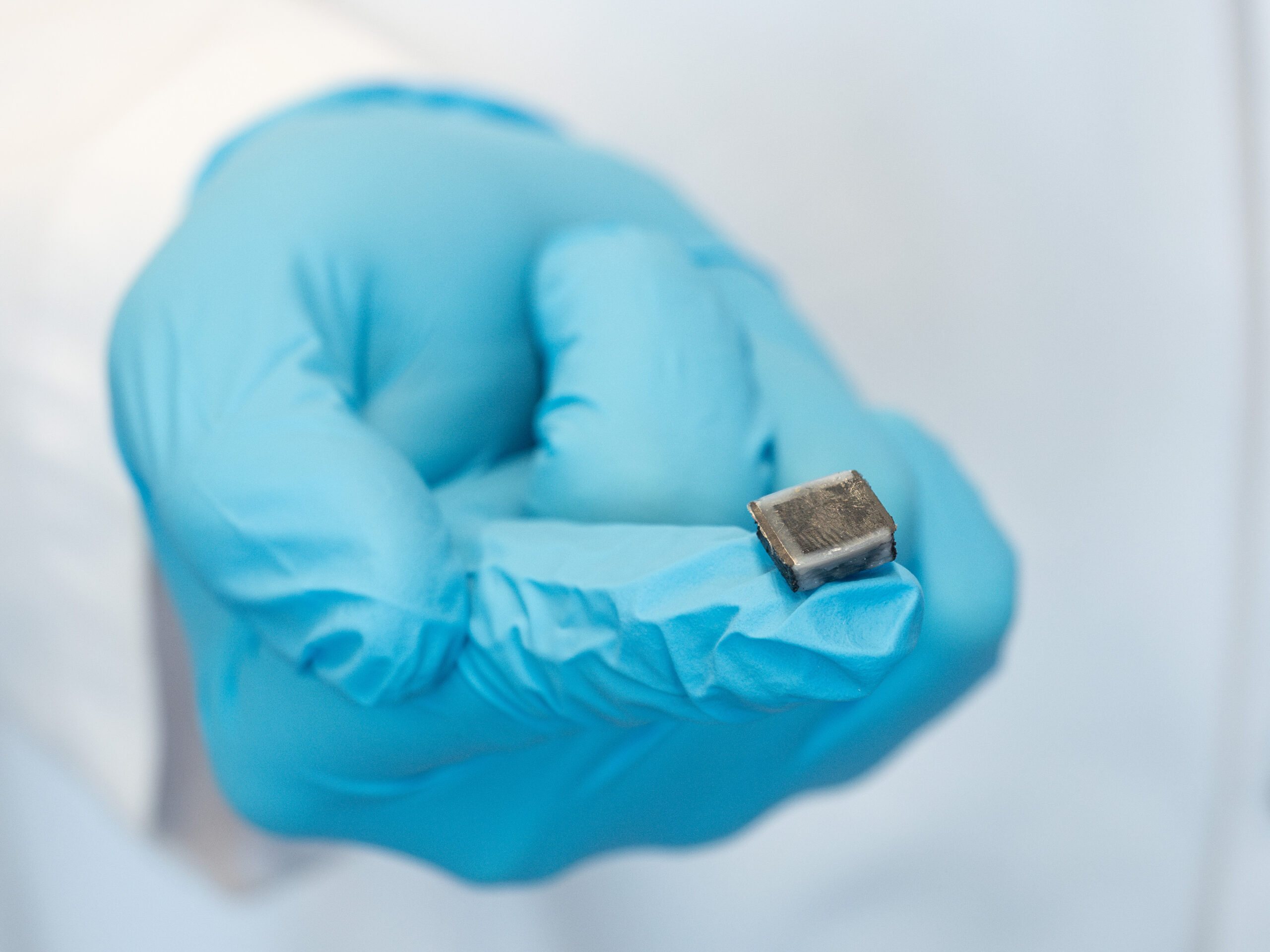Empa researchers are working on artificial muscles that can keep up with the real thing. They have now developed a method of producing the soft and elastic, yet powerful structures using 3D printing. One day, they could be used in medicine or robotics – and anywhere else where things need to move at the touch of a button.
Dübendorf/Switzerland, March 11, 2025. Artificial muscles don’t just get robots moving: One day, they could support people at work or when walking, or replace injured muscle tissue. However, developing artificial muscles that are in no way inferior to the real thing is a major technical challenge. In order to keep up with their biological counterparts, artificial muscles must not only be strong, but also elastic and soft. Basically, artificial muscles are so-called actuators: Components that convert electrical impulses into movement. Actuators are used wherever something moves at the push of a button, whether at home, in a car engine or in highly developed industrial plants. However, these hard mechanical components do not yet have much in common with muscles.
Reconciling contradictions
A team of researchers from the Empa Laboratory for Functional Polymers is therefore working on actuators made of soft materials. Now, for the first time, they have developed a method of producing such complex components using a 3D printer. The so-called dielectric elastic actuators (DEA) consist of two different silicone-based materials: a conductive electrode material and a non-conductive dielectric. These materials interlock in layers. ‘It’s a bit like interlocking your fingers,’ explains Empa researcher Patrick Danner. If an electrical voltage is applied to the electrodes, the actuator contracts like a muscle. When the voltage is switched off again, it relaxes to its original position.
Producing such a structure using 3D printing is not trivial, Danner knows. Despite their very different electrical properties, the two soft materials should behave very similarly during the printing process. They must not mix, but must still hold together well in the finished actuator. The printed ‘muscles’ must be as soft as possible so that an electrical stimulus can lead to the required deformation. Added to this are the requirements that all 3D printable materials have to fulfil: They must liquefy under pressure so that they can be pressed out of the printer nozzle. Immediately afterwards, however, they must be viscous enough to retain the printed shape.
‘These properties are often in direct contradiction to each other,’ says Danner. ‘If you optimise one of them, three others change, usually to the detriment of the others.’
From the glove to the heart
In collaboration with researchers from ETH Zurich, Danner and Dorina Opris, head of the ‘Functional Polymeric Materials’ research group, have succeeded in reconciling many of these contradictory properties. Two special inks, developed at Empa, are printed into functioning soft actuators using a nozzle developed by ETH researchers Tazio Pleij and Jan Vermant. The collaboration is part of the large-scale project ‘Manufhaptics’, which is part of the ETH Domain’s strategic focus area ‘Advanced Manufacturing’. The aim of the project is to develop a glove that makes virtual worlds tangible. The artificial muscles are designed to simulate the gripping of objects through resistance.
However, the soft actuators have far more potential applications. They are light, noiseless and, thanks to the new 3D printing process, can be moulded into any shape. They could replace conventional actuators in cars, machines and robotics. If they are developed even further, they could also be considered for medical applications.
Dorina Opris and Patrick Danner are already working on this: their new process not only makes it possible to print complex shapes, but also long elastic fibres. ‘If we make them a little thinner, we can get pretty close to how real muscle fibres work,’ says Opris. The researcher believes that in the future it may be possible to print an entire heart from such fibres. However, there is still a lot to do before such a dream becomes a reality.
Original publication:
PM Danner, T Pleij, F Liechti, J Wolf, AV Bayles, J Vermant, DM Opris: Rapid Manufacturing of High-Permittivity Dielectric Elastomer Actuator Fibers; Advanced Materials Technologies (2025); (https://doi.org/10.1002/admt.202500190)
ImageSource
Empa, Komplexität im kleinen Rahmen: Ein 3D-gedruckter weicher Aktor oder «künstlicher Muskel».


